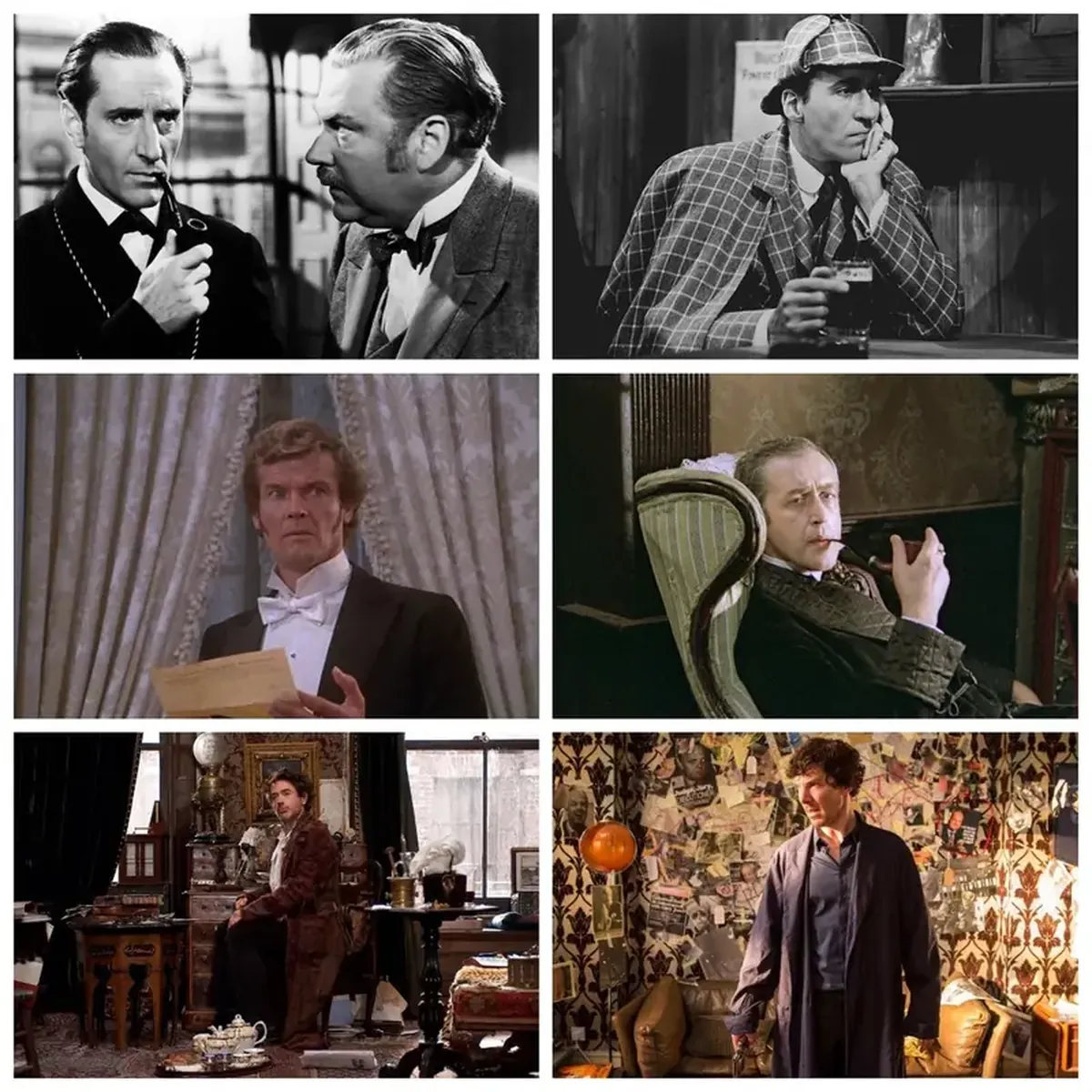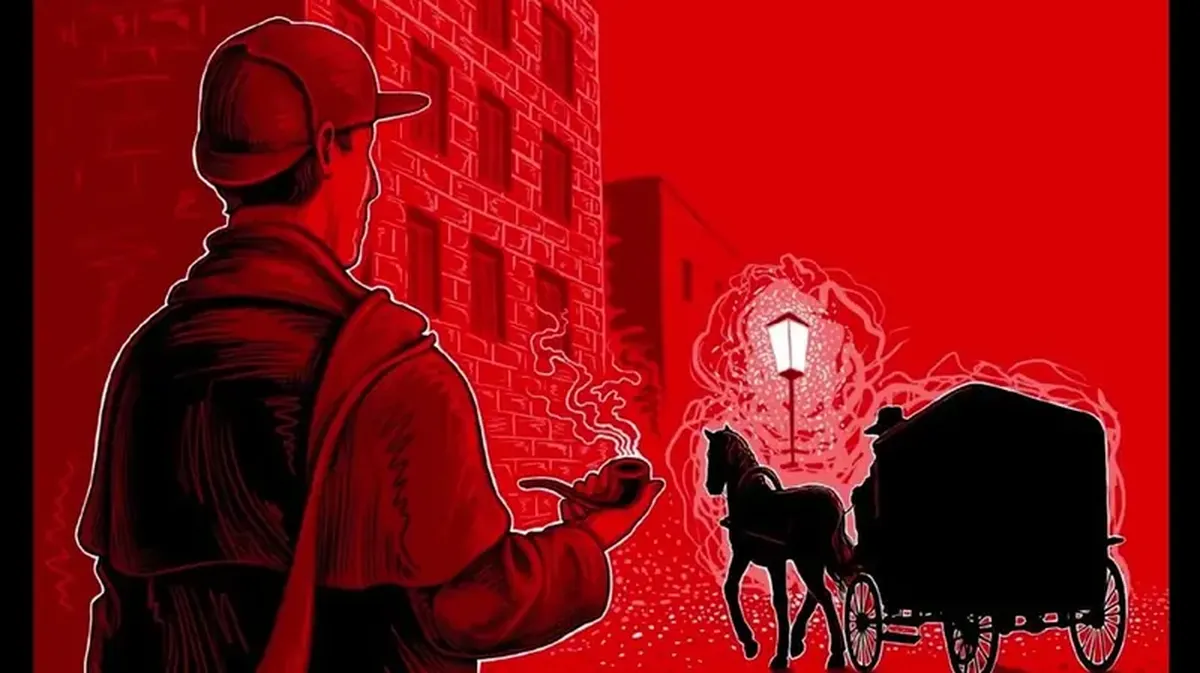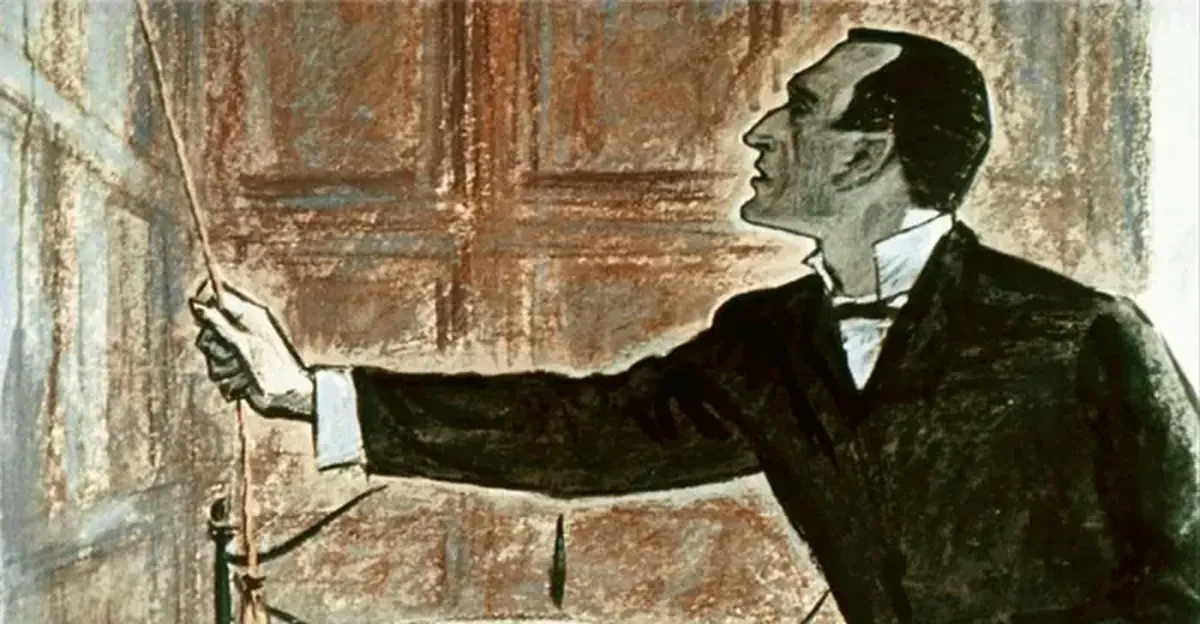
The literary figure created by Arthur Conan Doyle has come to life like a ghostly entity, reminiscent of the otherworldly beings the author encountered during his famous séances. Now, this character, who seems to have a life of his own, breathes life back into his creator. May 22, the birthday of the classic detective genre pioneer born in 1859, is celebrated annually as Sherlock Holmes Day and Arthur Conan Doyle Day, with the names of the holidays listed in that exact order in the international calendar. So, why not take this opportunity to focus on a figure who holds a Guinness World Record (Sherlock Holmes is recognized as the most adapted literary character)? Here’s how his biography might read if it were penned by literary sleuths.

A Rival to Santa Claus
The intelligent, noble, and just protector of the wronged and fighter against evil has become a cult figure in global culture, perhaps even a folkloric character. Museums, monuments, novels, films, video games, comics, and personal letters from fans all celebrate Sherlock Holmes. Critics suggest that in terms of popular appeal, only the iconic Santa Claus could rival the world’s most famous detective. However, the creator of the “star of private investigation” himself did not share much enthusiasm for his creation.
The Demand for Resurrection
The writer, whose interests were primarily in historical novels, considered his books about Sherlock Holmes to be “light reading” and once decided to end the tiresome character by literally killing him off in a deadly confrontation with Professor Moriarty. But this ending did not sit well with readers, who inundated the author with outraged letters demanding the return of their beloved hero. Thus, Conan Doyle continued to craft stories featuring Sherlock Holmes and Dr. Watson simply because they were eagerly awaited by Queen Victoria, who, according to legend, requested that Holmes be “resurrected.”
More Than Just Deduction
In addition to the brilliant detective Sherlock Holmes, Conan Doyle created other intriguing characters in his adventure, science fiction, historical, journalistic, and humorous works: the noble knight Sir Nigel, the eccentric Professor Challenger, and the dashing cavalry officer Gerard, among others. Yet, the Irish-born author was not solely defined by his writing; he was trained as an ophthalmologist and became an active proponent of spiritualism in the 1910s, a passion he maintained until the end of his days.
The Real-Life Prototype
The character of Sherlock Holmes (whose stories were published between 1887 and 1927) was inspired by Conan Doyle’s colleague, Dr. Joseph Bell. A colleague and mentor at the Royal Infirmary of Edinburgh, Bell was renowned for his ability to determine not only diagnoses but also the occupations, personalities, and life circumstances of patients based on subtle details. The prototype for Sherlock Holmes taught Conan Doyle medicine at Edinburgh University, imparting the observational and analytical skills that would underpin his future literary character’s deductive method.

The real-life prototype of Sherlock Holmes – Dr. Joseph Bell
Coincidences Are Just That
Among Conan Doyle’s acquaintances, biographers have identified several individuals with the name or surname Sherlock, and the writer may have borrowed the name from the well-known police inspector William Sherlock, who was mentioned in London newspapers in the 1880s for his investigations. Conan Doyle always had an interest in crime news, and he once worked in the suburb of Birmingham on Sherlock Street. Interestingly, the house at 221B Baker Street, where the author placed his characters Sherlock Holmes and Dr. Watson, did not actually exist until recently.

The house at 221B Baker Street
Details of Origin
In the story “The Case of the Translator,” it is revealed that Sherlock Holmes’s ancestors were “provincial gentry with their characteristic lifestyle,” his French grandmother was a sister to the French artist Verne, and his older brother Mycroft Holmes, who was seven years his senior, held an important analytical position in the British government. In another story, “The Norwood Builder,” another relative of Holmes is introduced – a young doctor named Werner, who purchased Dr. Watson’s practice in Kensington.
Reader Hypotheses
The author never disclosed Sherlock Holmes’s birth date. However, through “deduction” and some straightforward calculations involving astrological searches and piecing together fragmentary information from Conan Doyle’s works, attentive readers have determined it to be January 6. The year of the detective’s birth has been established as 1854: the events in the story “His Last Bow” take place in 1914, when Holmes would have been around 60 years old. Despite the lack of confirmations, the London Sherlock Holmes Museum cites the detective’s birth date as January 6, 1854.
Not for Money
Given the established birth date, one can conclude that Sherlock Holmes and Dr. Watson met in 1881, when the detective was 27 years old. He solved his first case, as recounted in the story “Gloria Scott,” during summer break from the college he attended for two years, around 1875. Since Holmes was looking for a roommate to share rent, readers deduced that he was not wealthy. Moreover, Sherlock Holmes took on criminal cases not for money, but to demonstrate the superiority of his deductive method.
Portrait of the Hero
By education, Sherlock Holmes was likely a biochemist. As stated in the first story “A Study in Scarlet,” at the time he met Watson, he was working as a laboratory assistant in a London hospital, was a “first-class chemist,” had an excellent understanding of anatomy, but had never studied medicine. The tall man, a resident of Victorian England, stood “six feet tall” (183 cm), but his excessive thinness made him appear even taller. His gray eyes, sharp gaze, eagle-like nose, and square protruding chin (does any actor portraying Sherlock Holmes match this description?) conveyed his lively energy and determination.

Actors who have portrayed Sherlock in adaptations over the years
A Paradoxical Personality
The owner of diverse talents relied in his career as a private detective not so much on the law as on his own code of honor and understanding of justice. A homebody and confirmed bachelor, he ventured outside the city only when absolutely necessary. Sherlock Holmes unraveled complex cases without ever leaving the sofa or armchair in Mrs. Hudson’s living room. He referred to intricate investigations as “a case for one pipe,” being an incorrigible tobacco enthusiast. He smoked excessively and was indifferent to luxury and even basic comforts.
“Cat-like Neatness”
At the same time, his defining trait was “cat-like neatness.” As noted in the novel “The Hound of the Baskervilles,” even while living in a cave, Holmes was clean-shaven and well-dressed. While he would not tolerate a single stain on his shirt, the order in his room and careful handling of his belongings were of lesser concern to him. Holmes could conduct risky chemical experiments at home and practice shooting by firing shots at a target of Queen Victoria’s monogram on the wall of his room. Despite repeatedly stating that he did not like women, Sherlock was invariably polite to them and always ready to lend a helping hand.
“The Great Gap”
The story “Gloria Scott” sheds light on the reasons behind Holmes’s decision to become a detective: it was encouraged by a friendly assessment of his analytical abilities by a classmate’s father. When John Watson married and moved out of their Baker Street apartment in 1888, Holmes continued to rent it from Mrs. Hudson on his own. After the detective who fought against evil disappeared without a trace in 1891 (“The Final Problem”), a three-year “gap” appeared in his biography, which enthusiasts also sought to fill. From 1891 to 1894, after a dramatic duel with Professor Moriarty, Holmes went into hiding.
On the Basis of Mutual Assistance
Having received a reader’s mandate to avoid the death of his beloved character, Conan Doyle, not without personal gain, brought him back to life: the adventures of Sherlock Holmes were so well compensated by publishers that the writer left his medical practice within four years and eventually abandoned other literary projects for detective stories. The first novel about the wise detective, “A Study in Scarlet,” was published in 1887, and the final book (“The Case-Book of Sherlock Holmes”) was released in 1927. Here’s how the life events of the charismatic hero of adventure stories unfolded thereafter.

Illustration from the first novel about the wise detective “A Study in Scarlet”
Experience of Escape
While the English public was convinced of Sherlock Holmes’s demise, Conan Doyle devised a way to assure readers that his hero had survived. After battling Moriarty at the edge of a waterfall, Holmes vanished in the Alps and made his way to Florence via mountain paths, where he found his brother and received funds for a two-year journey to Tibet. After visiting Lhasa and staying with the Dalai Lama, Holmes published his travel notes under the name of a Norwegian, Sigerson, and continued his journey to Persia. After visiting Mecca and Khartoum, the former homebody spent several months researching coal tar in southern France.
Out of Love for Mysteries
After dismantling Moriarty’s criminal organization, the detective unexpectedly reappeared in London in 1894. Sherlock Holmes settled back at Baker Street, reuniting with Dr. Watson, who had become a widower by that time. Announcing his retirement from cases, in 1904, the detective moved to Sussex to raise bees, declining job offers and only taking on select cases out of love for challenges that helped the 60-year-old investigator stay youthful. In 1923, Sherlock Holmes and Dr. Watson corresponded, planning to publish sensational cases and enjoying life, which even rheumatism could not spoil.
Best Stories
When asked to name the most interesting stories about Sherlock Holmes and Dr. Watson, Conan Doyle selected a dozen works, one of which he struggled to recall the title of. He named the most intriguing story “the one about the snake,” referring to Sherlock Holmes’s investigation in the story “The Adventure of the Speckled Band.” Additionally, the author highlighted the stories “The Adventure of the Red-Headed League,” “The Dancing Men,” “The Five Orange Pips,” “A Scandal in Bohemia,” “The Adventure of the Second Stain,” “The Empty House,” “The Devil’s Foot,” “The Case of the Intern,” “The Lion’s Mane,” and “The Noble Bachelor.”

Illustration from the story “The Adventure of the Speckled Band”
To Aid Investigations
Today, these plots are studied with professional interest by legal experts: the logical thinking methods described by Conan Doyle have become foundational in investigative science and part of relevant educational programs. Moreover, the popularity of the hero from this series of works, which have been transformed into new films and series about Sherlock Holmes, has transcended mere literary fame. The “father” of the deductive method has become a cult character of global renown, and his image continues to inspire humanity to create content across various fields of art.
